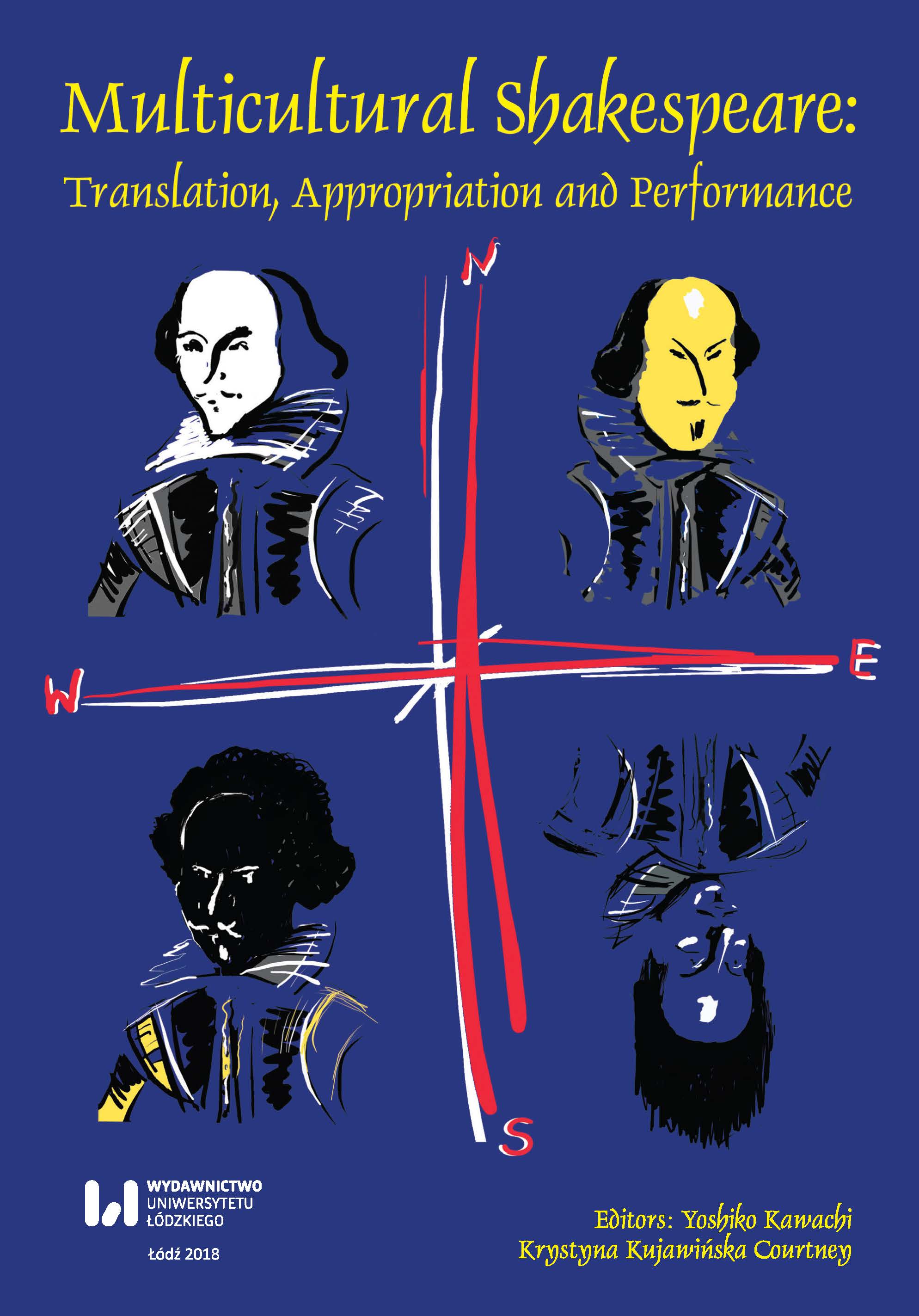Receptive Aesthetic Criteria: Reader Comparisons of Two Finnish Translations of "Hamlet"
DOI:
https://doi.org/10.18778/2083-8530.18.03Słowa kluczowe:
Shakespeare reception, translation, drama translation, Hamlet, Shakespeare in Finland, Matti Rossi, Eeva-Liisa MannerAbstrakt
This article examines the subjective aesthetic criteria used to assess two Finnish translations of Hamlet, one by Eeva-Liisa Manner (1981) and the other by Matti Rossi (2013), both accomplished translators for the stage. A survey consisting of one general question (“Briefly describe your idea of how Shakespeare translation should sound in Finnish, and what you think are the qualities of a good Shakespeare translation”) and five text extracts was distributed on paper and electronically, generating 50 responses. For the extracts, respondents were asked whether one or the other translation most closely dorresponded to their idea of what a Shakespeare translation should sound like and why, along with questions on whether they would prefer to see or read one or the other. The results show that there are no strong shared expectancy norms in Finland regarding Shakespeare translation. Manner was generally felt to be more concise and poetic, while Rossi was praised for his exquisite use of modern Finnish. Respondents agreed that rhythm was an important criterion, but disagreed on what sorts of rhythms they preferred. Translation of the “to be or not to be” speech raised the most passions, with many strongly preferring Manner’s more traditional translation. The results suggest that Shakespeare scholars would do well to take variations in expectancy norms into account when assessing and analysing Shakespeare in translation.
Pobrania
Bibliografia
Aaltonen, Sirkku. “Retranslation in the Finnish Theater.” Traducao, Retraducao e adaptacao 1.11 (2003): 141-159.
Google Scholar
Chesterman, Andrew. Memes of Translation. John Benjamins Publishing Company, 1997.
Google Scholar
Chesterman, Andrew. “Norms of the Future?” Ian Kemble, ed. Translation Norms: What is “Normal” in the Translation Profession? Portsmouth: University of Portsmouth: School of Languages and Area Studies, 2005. 1-9.
Google Scholar
Gallimore, Daniel. “Shakespeare’s History Plays in Japan.” Hoenselaars, Ton. Shakespeare’s History Plays: Performance, Translation and Adaptation in Britain and Abroad. Cambridge: Cambridge UP, 2004. 92-107.
Google Scholar
Gallimore, Daniel. “Tsubouchi Shōyō and the Beauty of Shakespeare Translation in 1900s Japan.” Multicultural Shakespeare: Translation, Appropriation and Performance. 13 (2016): 69-85.
Google Scholar
Hardwick, Lorna. “Playing Around Cultural Faultlines.” Chantler, Carla Dente and Ashley. Translation Practices: Through Language to Culture. Amsterdam: Brill Academic Publishers, 2009. 167-183.
Google Scholar
Huang, Alexander C.Y. “Shakespeare and Translation.” Mark Thornton Burnett, Adrian Streete and Ramon Wray, eds. Edinburgh Companion to Shakespeare and the Arts. Edinburgh: Edinburgh University Press, 2011. 68-87.
Google Scholar
Johnston, David. “Metaphor and Metonymy: the Translator-Practitioner’s Visibility.” Roger Baines, Cristina Marinetti, and Manuela Pergeghella, eds. Staging and Performing Translation: Text and Theater Practice. Houndmills, Basingstoke: Palgrave Macmillan, 2011. 11-30.
Google Scholar
Keinänen, Nely. “Canons and Heroes: The Reception of the Complete Works Translation Project in Finland, 2002-13” Multicultural Shakespeare, volume 16.1 (2017): 109-125.
Google Scholar
Koskinen, Kaisa and Outi Paloposki. Sata Kirjaa, Tuhat Suomennosta: Kaunokirjallisuuden Uudelleenkääntäminen. Helsinki: Suomalaisen Kirjallisuuden Seura, 2015.
Google Scholar
Leppihalme, Ritva. “Foreignizing Strategies in Drama Translation.” Andrew Chesterman, Natividad Gallardo San Salvador, Yves Gambier, eds. Translation in Context. Amsterdam: John Benjamins, 1998. 153-62.
Google Scholar
Manner, Eeva-Liisa, translator. William Shakespeare’s Hamlet. Helsinki: WSOY, 1998.
Google Scholar
Martin, Alice. “Macbethista Hamletiin: Kymmenen Vuoden Oppismisprosessi” [From Macbeth to Hamlet: A Ten-Year Learning Process]. Synteesi 1-2/2016 (volume 35): 71-81.
Google Scholar
Munday, Jeremy. Introducing Translation Studies, 2nd edition. London: Routledge, 2008.
Google Scholar
Puurtinen, Tiina. “Two Translations in Comparison: A Study on Readability.” Tirkkonen-Condit, Sonja and Stephen Condit, eds. Kielitieteellisiä Tutkimuksia, Studies in Languages. Joensuu: University of Joensuu, 1989. 87-111.
Google Scholar
Rissanen, Matti. Ollako vai eikö olla? Kenen käännös? Kas siinä pulma [To be or not to be? Whose Translation? That is the Question]. Helsinki: Research Unit for Variation, Contacts and Change in English (Varieng), University of Helsinki, 2013. electronic. .
Google Scholar
Rossi, Matti, translator. William Shakespeare’s Hamlet. Helsinki: WSOY, 2013.
Google Scholar
Ruokonen, Minna. “Target Readers’ Expectations and Reality: Conformity or Conflict?” Pekka Kujamäki et al, eds. Beyond Borders: Translations Moving Languages, Literatures and Culture. Berlin: Frank & Tunne, 2011. 73-100.
Google Scholar
Siponkoski, Nestori. Translation under Negotiation: The Textual Interplay of Translators and Editors in Contemporary Finnish Shakespeare Translation. Vaasa: University of Vaasa, 2014.
Google Scholar
Venuti, Lawrence. “Retranslations: The Creation of Value.” Bucknell Review 47.1 (2004): 25-38.
Google Scholar
Pobrania
Opublikowane
Jak cytować
Numer
Dział
Licencja

Utwór dostępny jest na licencji Creative Commons Uznanie autorstwa – Użycie niekomercyjne – Bez utworów zależnych 4.0 Międzynarodowe.












